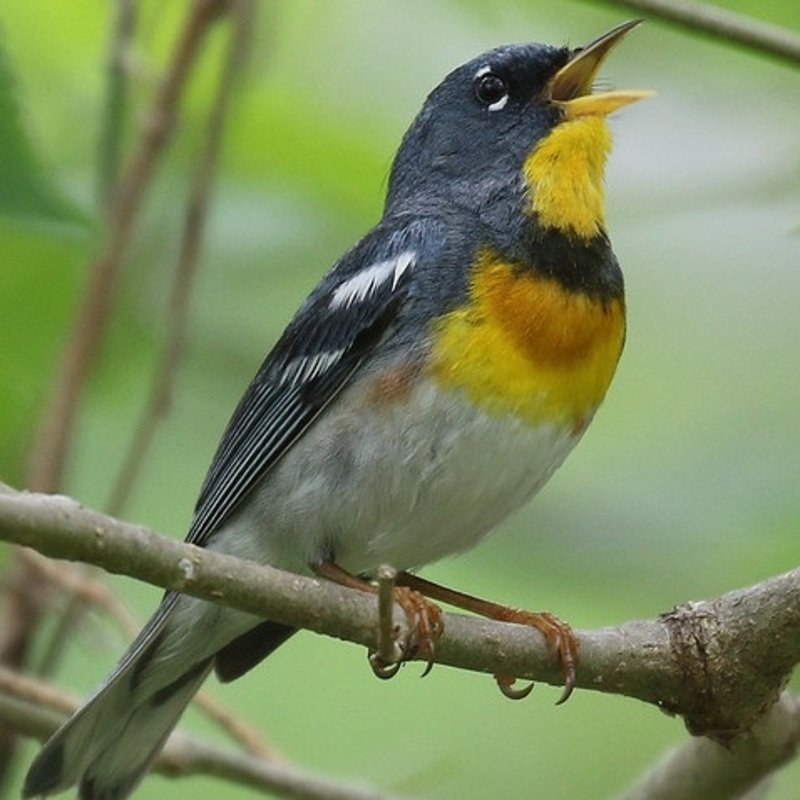The northern parula (Setophaga americana) is a tiny warbler native to the New World. Breeding ranges from southern Canada to Florida in eastern North America. The northern parula is a tiny migratory warbler in North America, frequently being one of the smallest birds in a mixed feeding group alongside kinglets or gnatcatchers.
Quick Overview: Setophaga Americana – Northern Parula
Body size: Around 4.25 in (11 cm) and a weight of 9 g (.3 oz)
Main colors: Blue-Gray, Bronze-Green, Yellow, Chestnut-brown, Black, White
Range: Eastern United States
Migratory Bird: Yes
Best time of the year to see in the U.S.: June, July, August, September
Conservation Status: Least Concern
Northern Parula Description
The warbler is small and compact, with blue-gray upper parts and a bronze-green back patch. Yellow throat and breast, chestnut-brown and black breast band, white belly, and under tail coverts. The white eye ring is damaged. Blue-gray wings with two white bands. The tail is notably shorter than the rest of the body.

Size
These birds have a length of 4.25 in (11 cm) and a weight of 9 g (.3 oz). Their wings could range from 7 in (18 cm).
Feeding
Primarily insects. Small beetles, flies, moths, caterpillars, egg clusters, genuine bugs, ants, bees, wasps, and other insects, as well as spiders, are its food sources. Additionally, it consumes some little berries. May feed a large number of soft green larvae to nestlings.
Habitat
Northern parulas are found in a variety of environments, depending on the season and location. Although this species is largely a woodland dweller, the northern and southern breeding populations prefer distinct settings. Pasturelands; damp, dry, or wet woodlands; and agricultural fields or plantations are examples of these environments.
Behavior
Typically located 4-50′ above the ground in a hollow carved in hanging tree lichens (Usnea) or Spanish moss. When lichens or Spanish moss are not available, dangling clumps of twigs or pine needles may be used, or debris left by floods may be placed in branches hanging over the stream.
Setophaga Americana Scientific Classification
- Kingdom: Animalia
- Phylum: Chordata
- Class: Aves
- Order: Passeriformes
- Family: Parulidae
- Genus: Setophaga
- Species: Setophaga americana
Best time of the year to see
The best time to see these birds in the United States is during the summer season (June – September).
Distribution of the Northern Parula in the USA
Breeds from southeastern Canada to the Gulf coast and winters in the tropics, including the West Indies and southern areas of Mexico.
The Northern Parula can be found in the following states in the United States – Alabama, Alaska, Arkansas, California, Connecticut, Delaware, Florida, Georgia, Hawaii, Illinois, Indiana, Iowa, Kansas, Kentucky, Louisiana, Maine, Maryland, Massachusetts, Michigan, Minnesota, Mississippi, Missouri, Nebraska, New Hampshire, New Jersey, New York, North Carolina, Ohio, Oklahoma, Oregon, Pennsylvania, Rhode Island, South Carolina, Tennessee, Texas, Vermont, Virginia, Washington, West Virginia, and Wisconsin.
